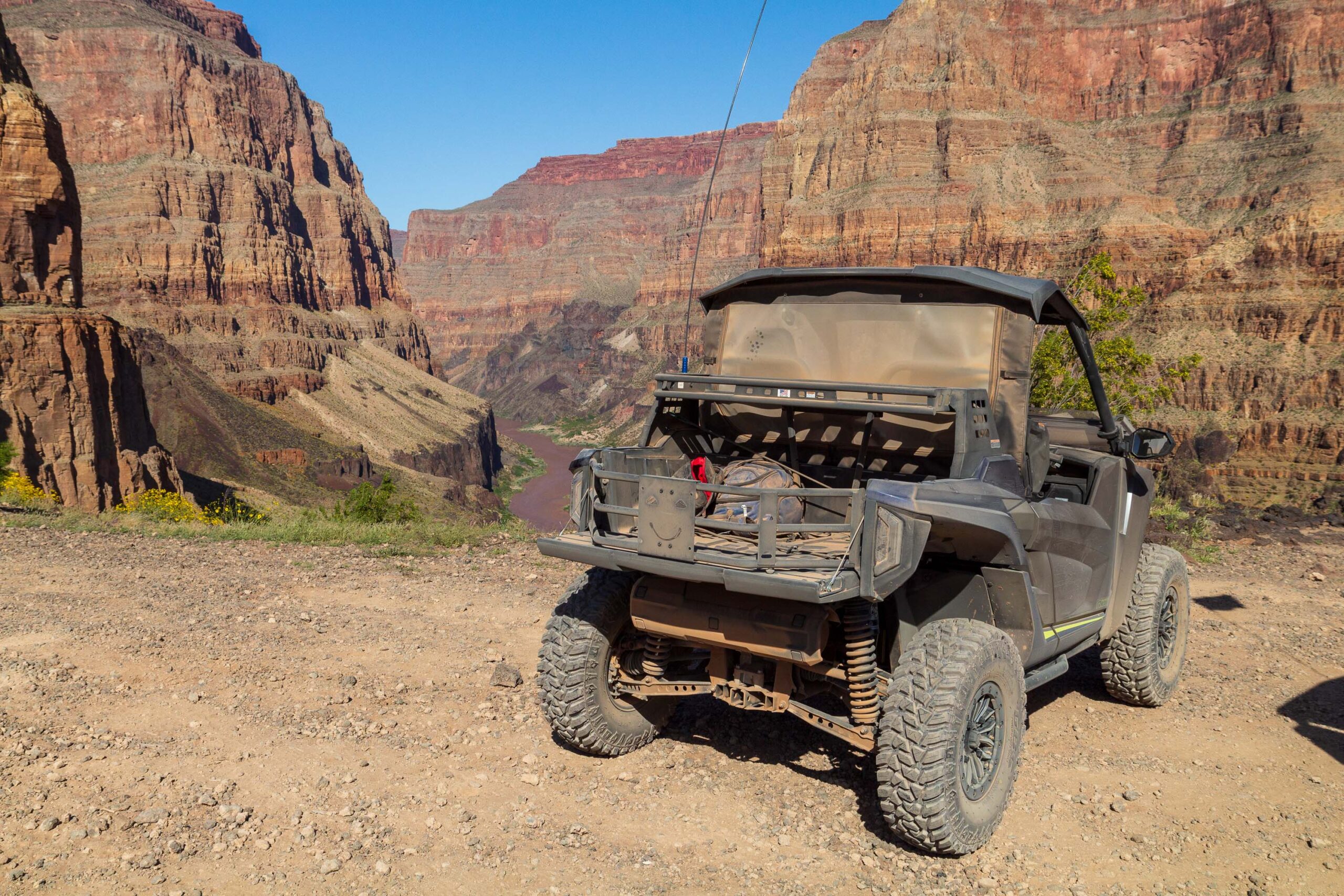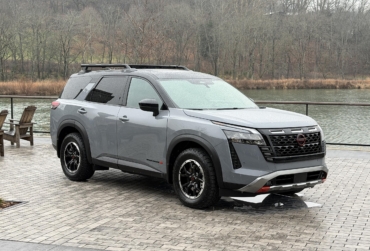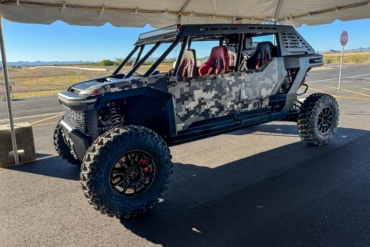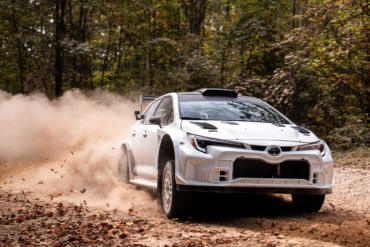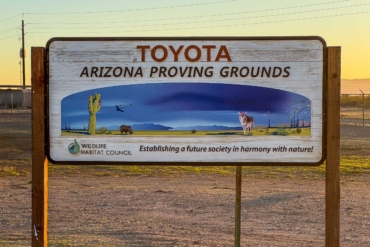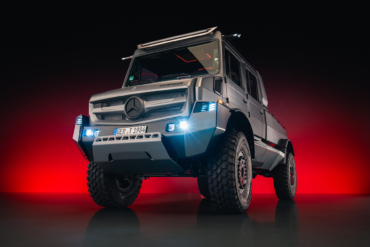I was worried I would be underwhelmed. After spending an entire day behind the wheel of a UTV and becoming part of some of the most amazing scenery in the world, could it hold up? Would seeing the Grand Canyon in person for the first time live up to my expectations? A Yamaha Wolverine RMAX 1000 was about to help me find out.
I’ve seen the Grand Canyon before, but only from around 40,000 feet. From that height, like most of the world’s wonders, it looks flat. Unimpressive.
Niagara Falls, the Alps, the Rockies, from a plane, they’re just things passing by underneath you. Two-dimensional representations in a three-dimensional world. To truly appreciate nature, you need to get up close, and you need to get personal. You need to go on an adventure and discover. To find the sights, smells, and feel of a place.
Most of the millions of visits to the Grand Canyon start from the same spot in Arizona. The South Rim, at Grand Canyon Village, is the spot you can easily drive to. The tourist spot.
Forget About the Pavement
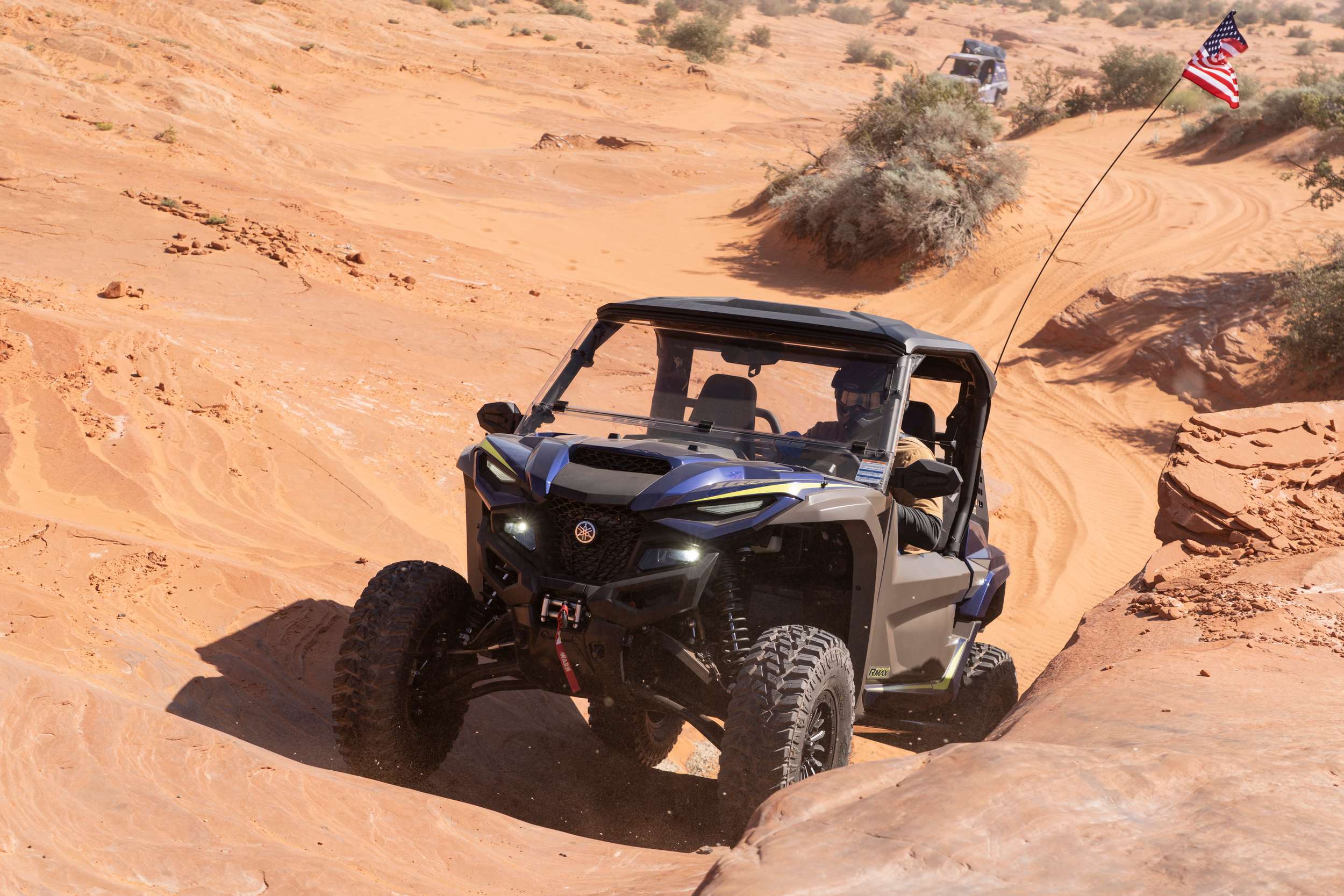
Instead of a busy tourist spot, I’m headed to the Bar 10 ranch. It’s a rustic site on an active ranch that caters to rafters who have braved 188 miles of the most treacherous waters the Colorado River has to offer. They exit at the Whitmore Wash for a flight back home shortly after navigating the roughest rapids on the entire river.
Bar 10 also caters to avid off-roaders. The kind of people ready to take on 80 miles of primitive roads just to get there.
That’s 80 miles of tracks if you want to go the short way. Nobody wants to go off-roading the short way, naturally, and my route took me about 150 miles out on a much more meandering path.
First, a Turn Into the Sand
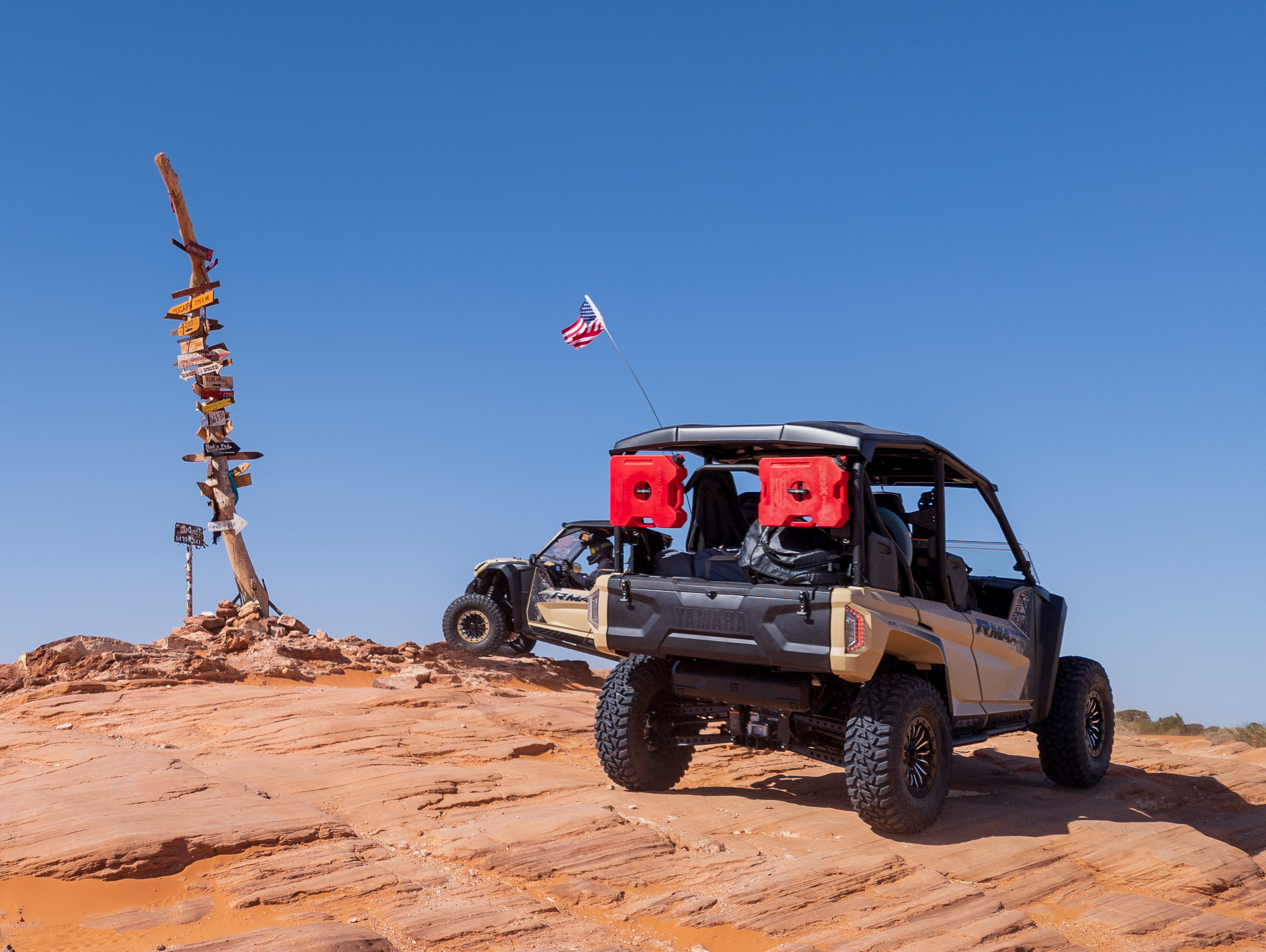
My starting point was Sand Hollow, a 20,000-acre park that stretches to Utah’s border with Arizona. It has just a single access tunnel from the parking lot to the dunes, and it is a tunnel that leaves you with a tough choice.
A left turn took you into what seemed like endless open dunes. A right turn would take you to a mix of sand and rocks to crawl over. Naturally, we turned right.
The terrain was a serious challenge. Door-eating obstacles, tough climbs, and large boulders. Some I had to try more than once, and a few needed a spotter.
But I wasn’t looking at the trail. I was looking at the horizon. The view was stunning, with red sand and red rocks as far as I could see, doing an excellent job of making me feel microscopic against its grandeur.
From the Top of the World to Hurricane to the Cliffs of Insanity
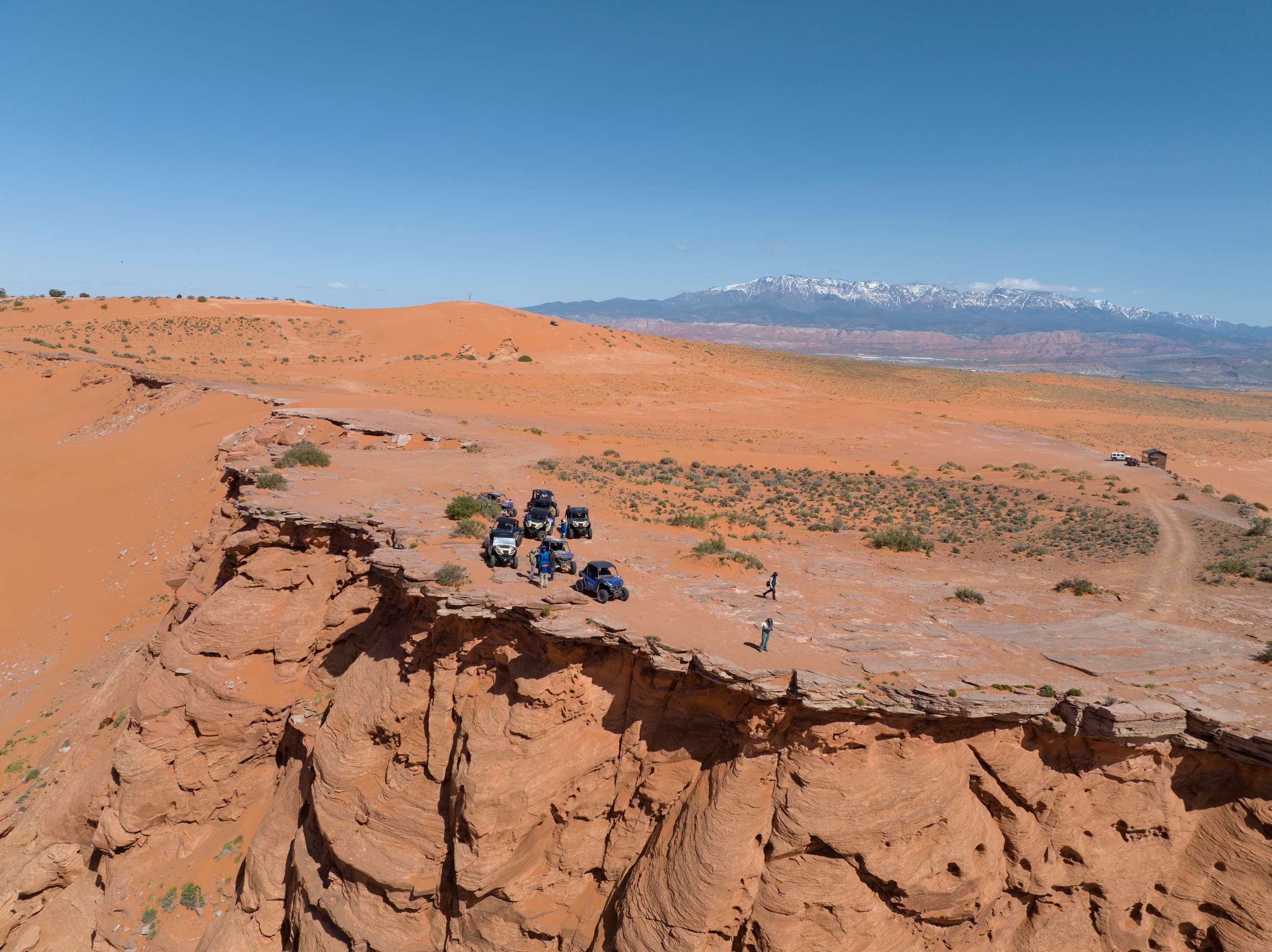
Sand Hollow is filled with landmarks like Top of the World, where you can see Zion to the north, the Hurricane cliffs to the east, and a classic signpost that tells you how far it is to cities and landmarks around the world.
Further south is Flintstone House, an incredible natural formation where the red rock has eroded in just the right way to leave what looks like a stone house. It’s not spacious, but it is big enough for the family to fit in for a photo.
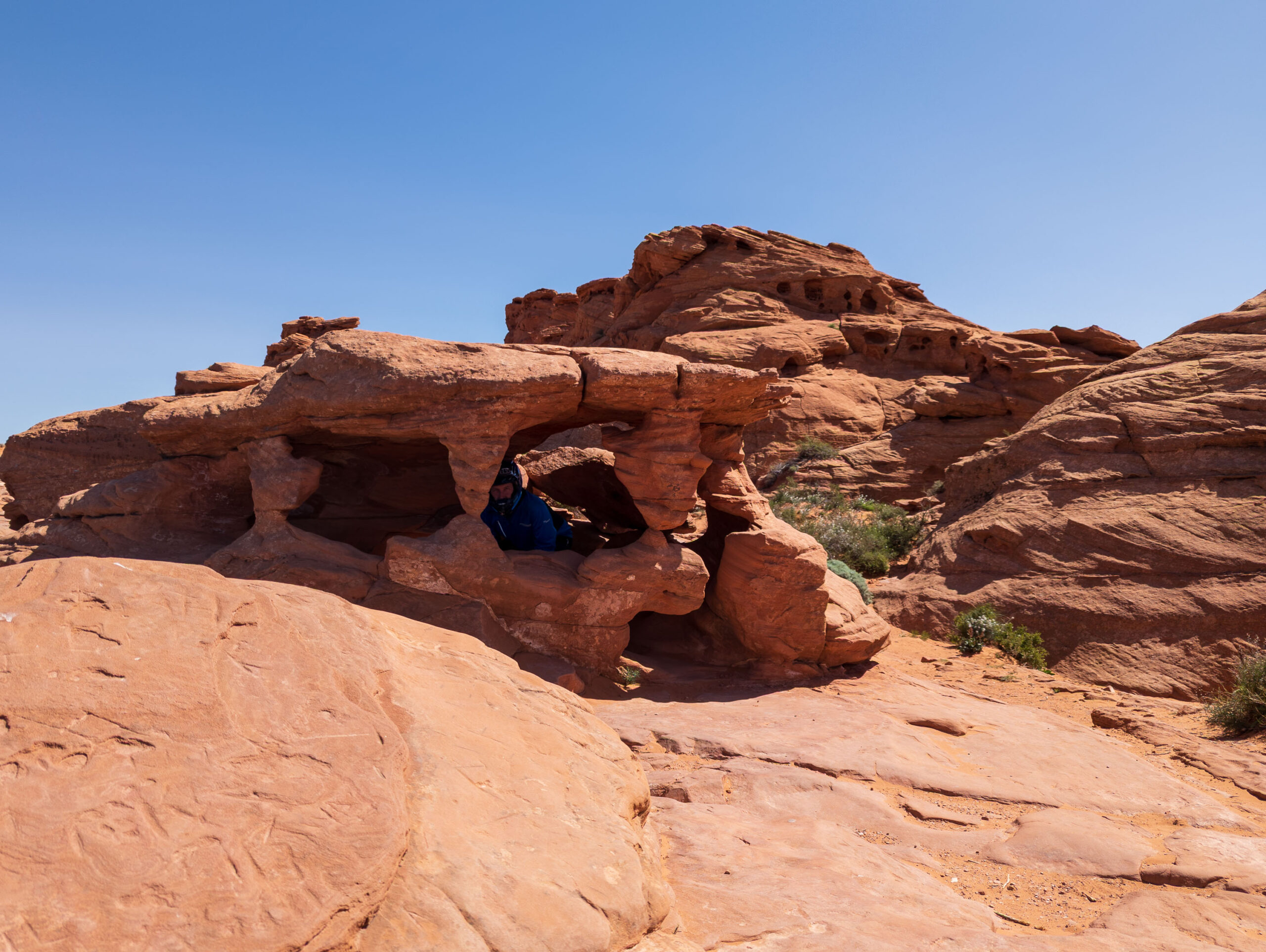
Nature has carved some amazing formations into the rocks here. I spotted what was clearly a dragon — even though the locals call it a pig’s head — and some amazingly intricate patterns. Our guide said these patterns formed naturally, the result of centuries of erosion. They’re so complex I’m not sure I believe it.
From there, I arrived at a sharp drop. I’ll learn later that this was called the “Cliffs of Insanity.” Another wonderfully evocative name that surely has some great history behind it, but, like with so much local knowledge, that nugget hasn’t made it to the internet.
Over a Trail of Fossils
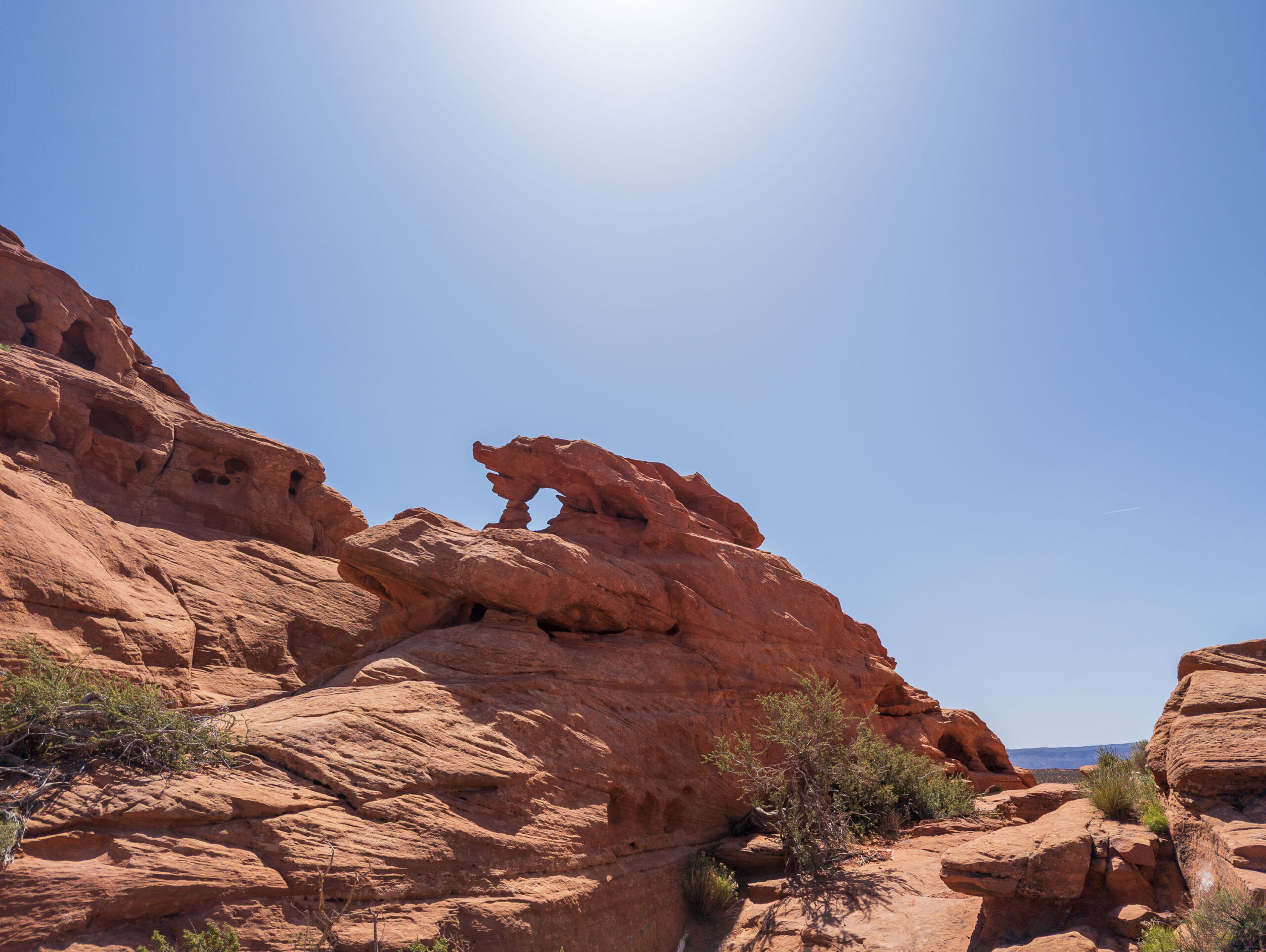
I left Sand Hollow, following the red rock to the east and passing under powerlines — one of the only signs we’ll see of modern technology over the two days — before running into the Hurricane cliffs. The cliffs are a 135-mile-long remnant of the Kaibab Limestone, a layer of rock up to 500 feet thick that spans four states. Loaded with fossils, this layer forms the flat tops that are unique to the area around the Grand Canyon.
I rode along in the shadow of the cliffs, crossing into the Arizona Strip. Not a Vegas club or a strange local character, the Strip is a strange section of northern Arizona the size of New Jersey but home to just 8,000 and cut off from the rest of the state — and major towns — by the Colorado River. It remains one of the wildest parts of the U.S.
We have a satellite phone on hand, but I’m not expecting much help should anything go wrong. That thought had me watching carefully for the ruts, washes, and blend of every size of rock imaginable that blended into the monochromatic trail but could send me flying into the desert.
The Green Desert?
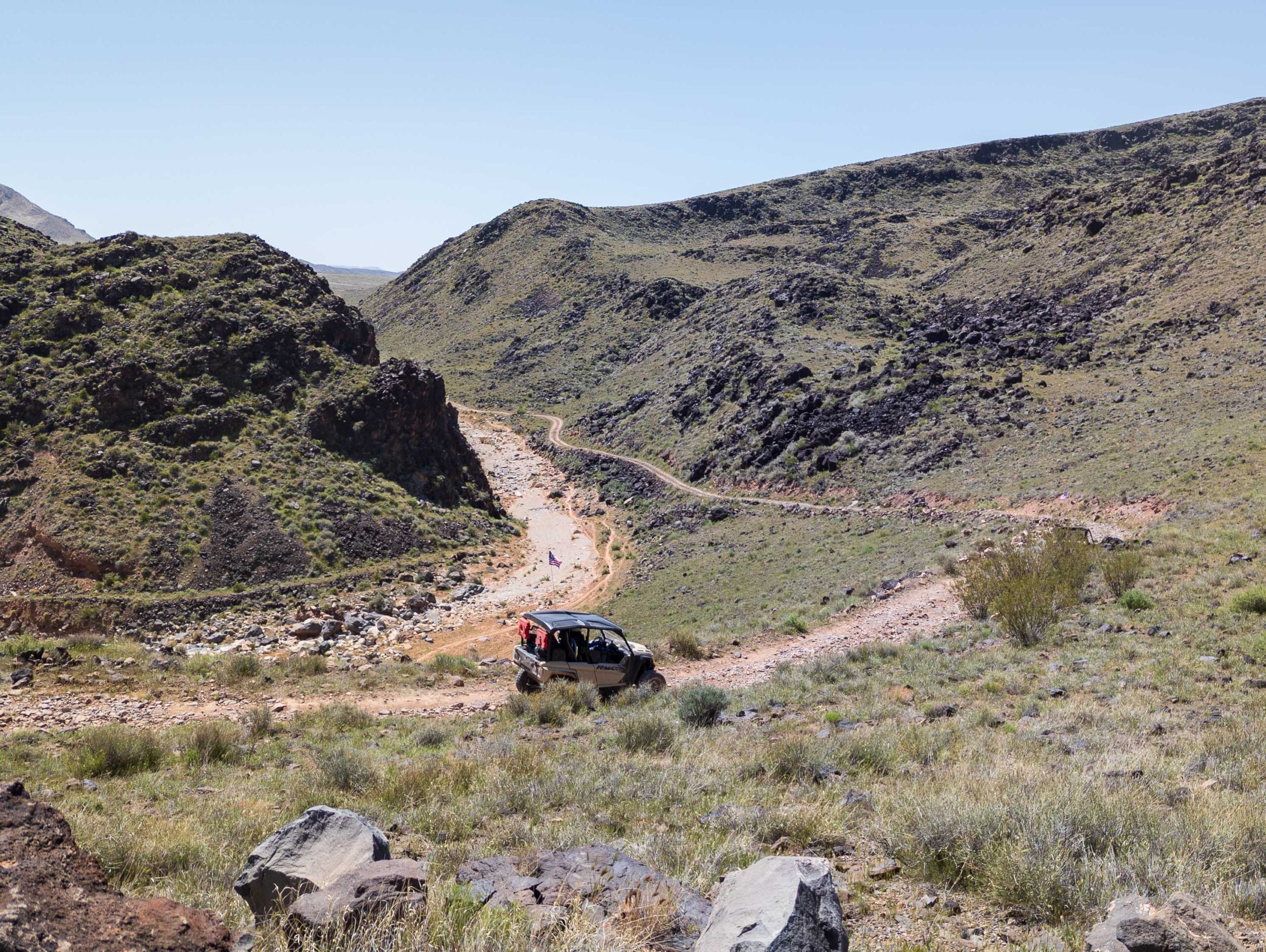
Now that we’ve left the dunes of Sand Hollow, I was surprised to see just how lush the desert can be. The same rains that have brought super blooms and dozens of feet of snow to California have transformed the high desert into a sea of green.
The smell of sage hung in the air like dust as our convoy of Wolverines blasted through the brush. The prickly pear cactus were in bloom with their bright pink flowers, and I was enveloped by the smell of a short purple flower. There are fields of dozens of acres of this plant, one I’ve been frustratingly unable to identify.
I traveled through sites and along trails where we were likely the first group to set foot this year, and it felt like seeing something I shouldn’t. A special show that the land could put on only in increasingly fleeting years amid extended droughts.
Wild Horses Won’t Get My Burrito
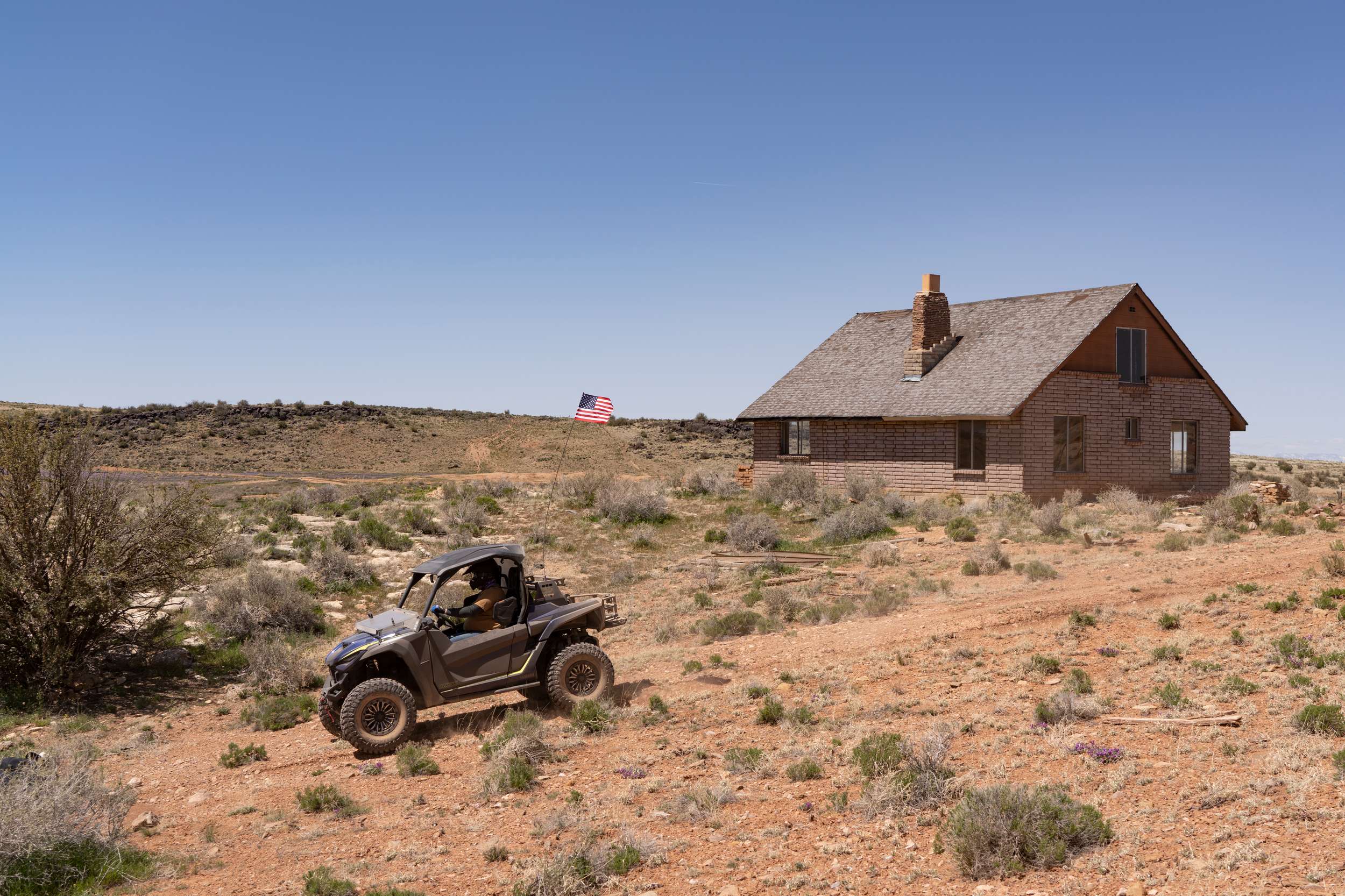
Lunch was at one of these first fields. In a place called Shanley Tank, just after a short climb to the top of the magical Hurricane Cliffs. The spot is over 6,000 feet above sea level, and that’s the excuse I’ll use for huffing and puffing around when I stopped driving. And why the Wolverine started to feel sluggish.
We’re eating in front of a deserted house that looks too new and well-kept to have been abandoned. The dry desert air helps preserve buildings out here, and a decaying wooden corral fence and successive generations of buildings show that someone tried to make a living here. It looks like at least a few generations were successful at it, at least until sometime in the 1980s, leaving me wondering what changed.
Some wild horses were lingering, no doubt drawn in by water in the aforementioned tank and those flowers. They were eyeing my breakfast burrito, but there was no chance they were getting even a crumb. I was famished.
Hours of riding had made me impatient as well as hungry. When were we finally going to reach the Grand Canyon? Every time I crested a rise, I hoped that the Canyon was about to stretch out in front of me. Instead, each time I saw a valley that would leave me awestruck in any location but this one. But no canyon and certainly no Canyon.
Home on the Range
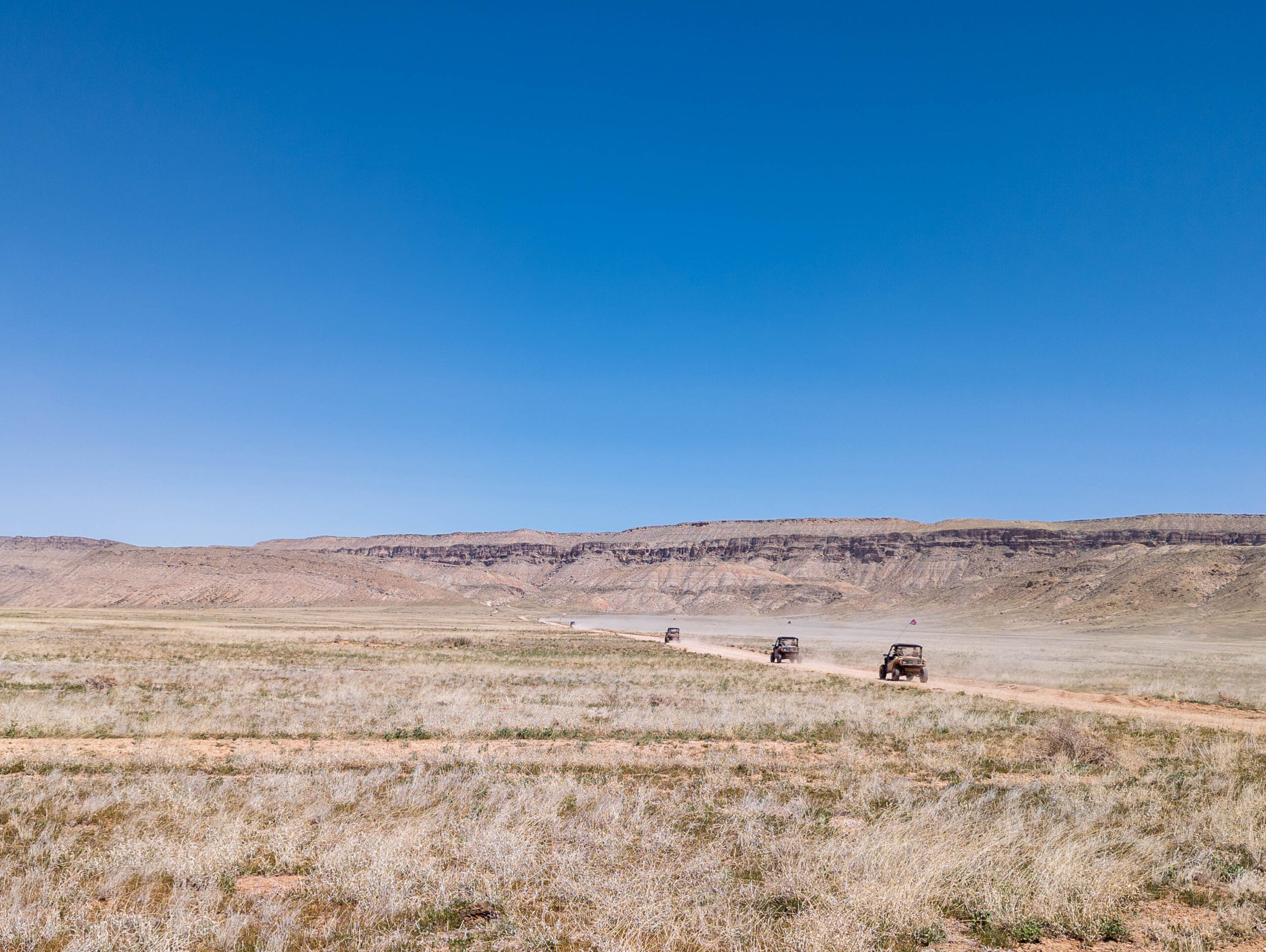
This is Basin and Range province. A stretch of the western part of the continent where the earth’s crust has been stretched up to double its original width. The millions-years-long process has left this series of cliffs, canyons, hills, salt flats, and view after incredible view.
We dropped down from the Hurricane Cliffs one last time at the base of Mount Trumbull. The top of the mountain sits at just over 8,000 feet, and there was still enough snow up there to make it inaccessible. Otherwise, we would have been ascending the remains of the first volcano eruption in this massive field.
Instead, I’ve gone around the mountain and ended up on what passes for a main road in these parts.
After hours of twisting, winding, and rock-strewn tracks, I was happy to open up the throttle for a while on this relatively straight section. I was also happy to get some airflow because I had just dropped back down to around 4,000 feet. At that altitude, the air was noticeably warmer than at higher elevations.
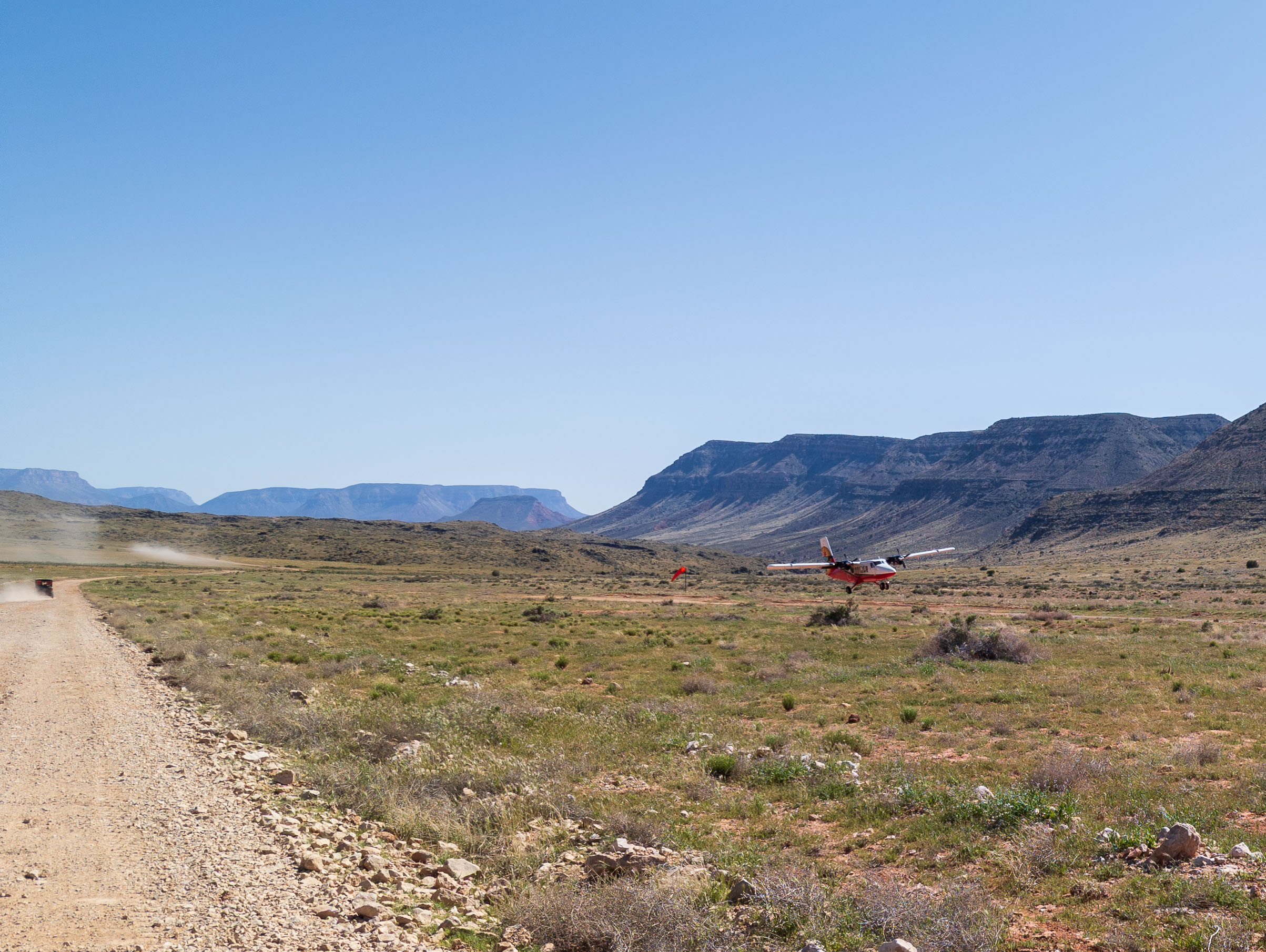
Then came the biggest surprise of the whole trip. No, not the Whitmore International Airport (a dirt strip that services the Bar 10 Ranch), but a grader. These roads, dozens of miles from anything, are maintained by state and federal resources.
That should be “maintained” and “road” said with some air quotes around them. As far as I could tell, all that the grader was accomplishing was getting in the way and dumping loose boulders into the path while loping along at 2 miles per hour and making sure that nobody could pass.
A Mountain Turned Upside Down
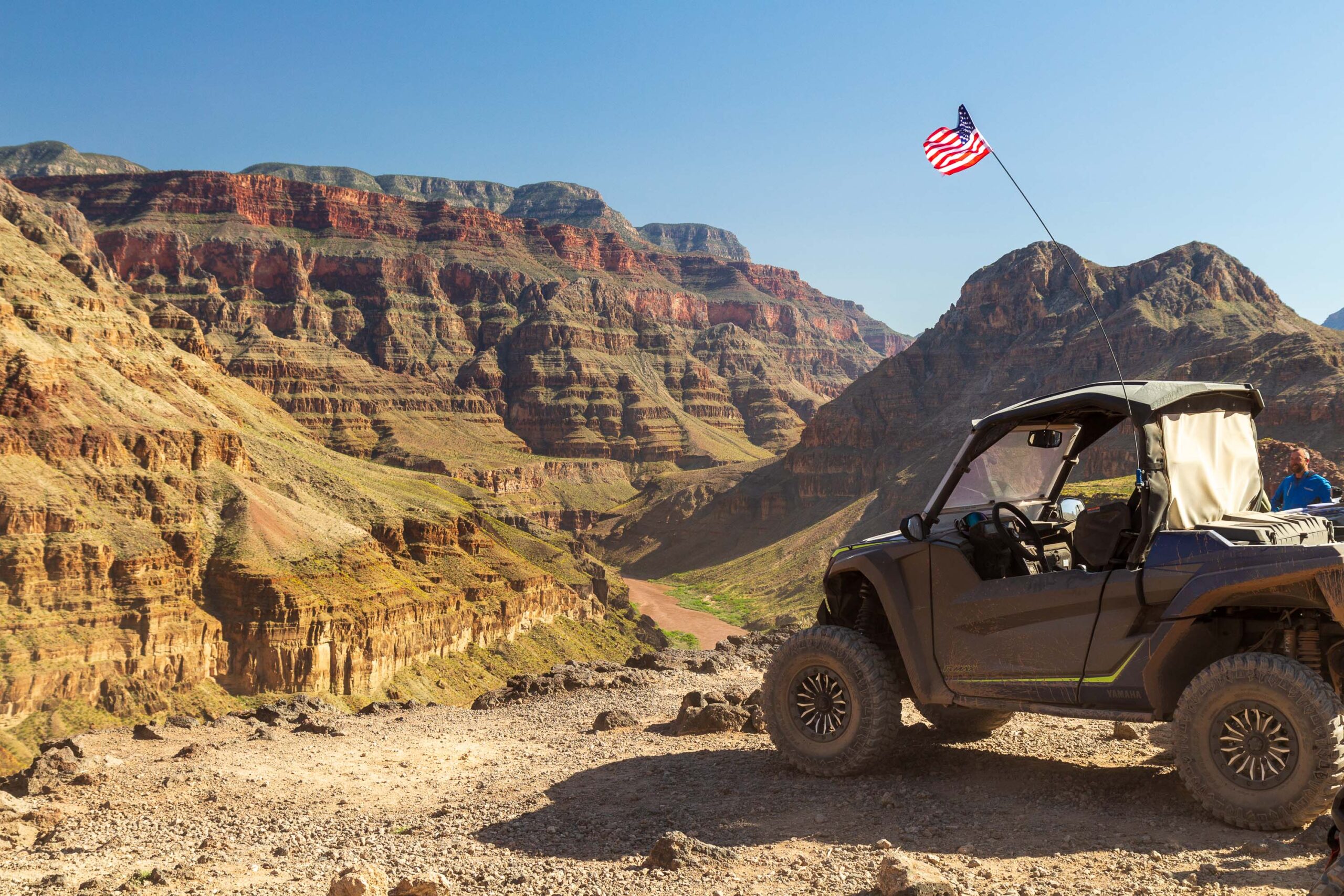
Finally, after some dicey passing moves and one last winding trail descent, there it was. The western end of the Grand Canyon with the Colorado River raging hundreds of feet below. A cocoa-brown mass of water hurtling along, carrying fallen trees and anything else unfortunate enough to end up in the maelstrom.
The Paiutes, one of the six nations who live near the Canyon, call it Kaibab — the mountain turned upside down (or laying down, depending on whom you ask). From this spot, it’s easy to understand that choice of name.
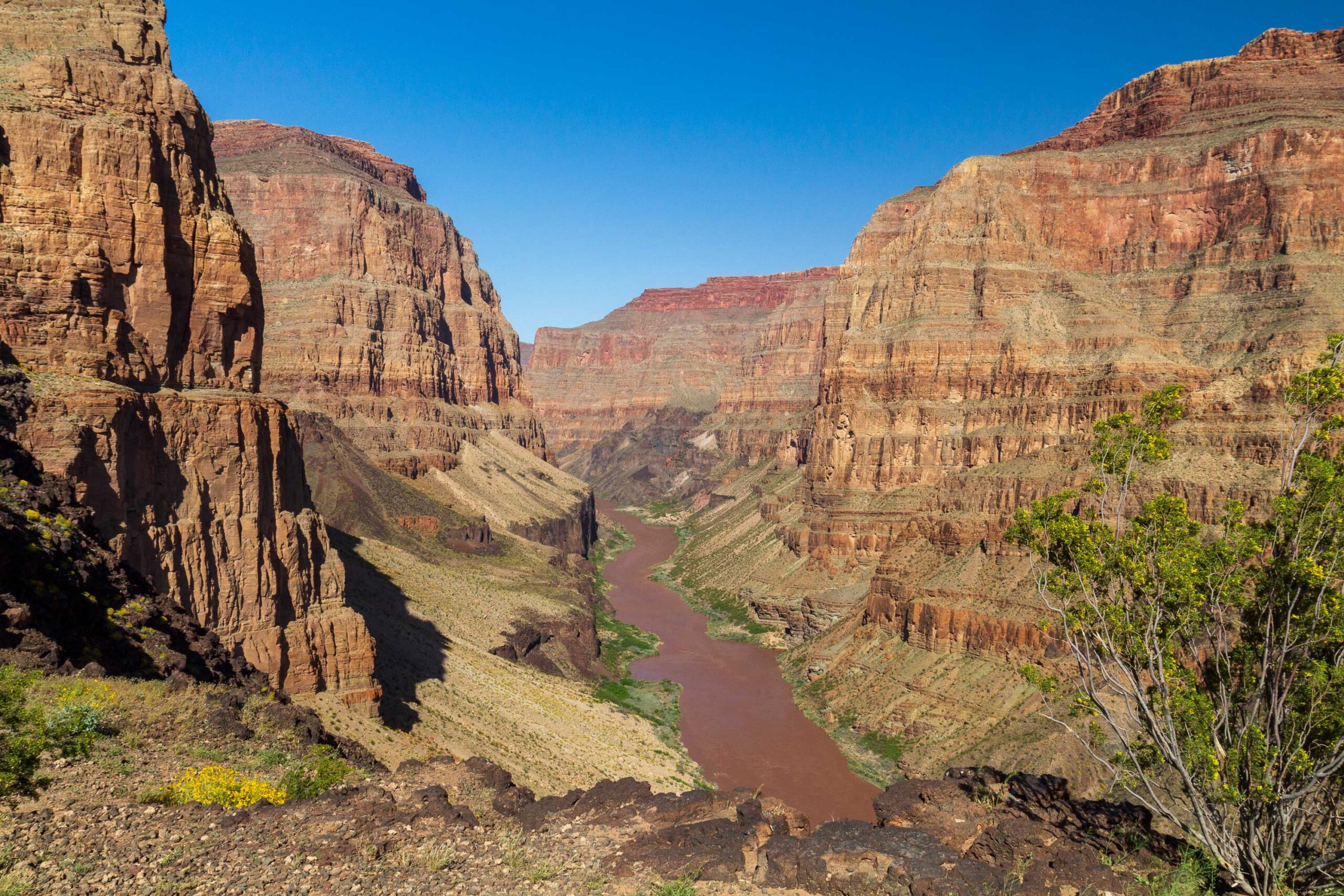
My view didn’t extend for dozens of miles the way it does at the easier access points, but it was no less grand. With the southern side of the Canyon towering above my head and what looked like a sheer drop at my feet — even if the drone shots disagreed — I was up close and personal with layers upon layers of rock, some of which dated back more than 70 million years.
On the way to this viewpoint, I passed massive piles of what looked like coal. I knew that the west was dotted with mines, but I didn’t expect this much coal just sitting out in the open.
Lava and Erosion at My Feet
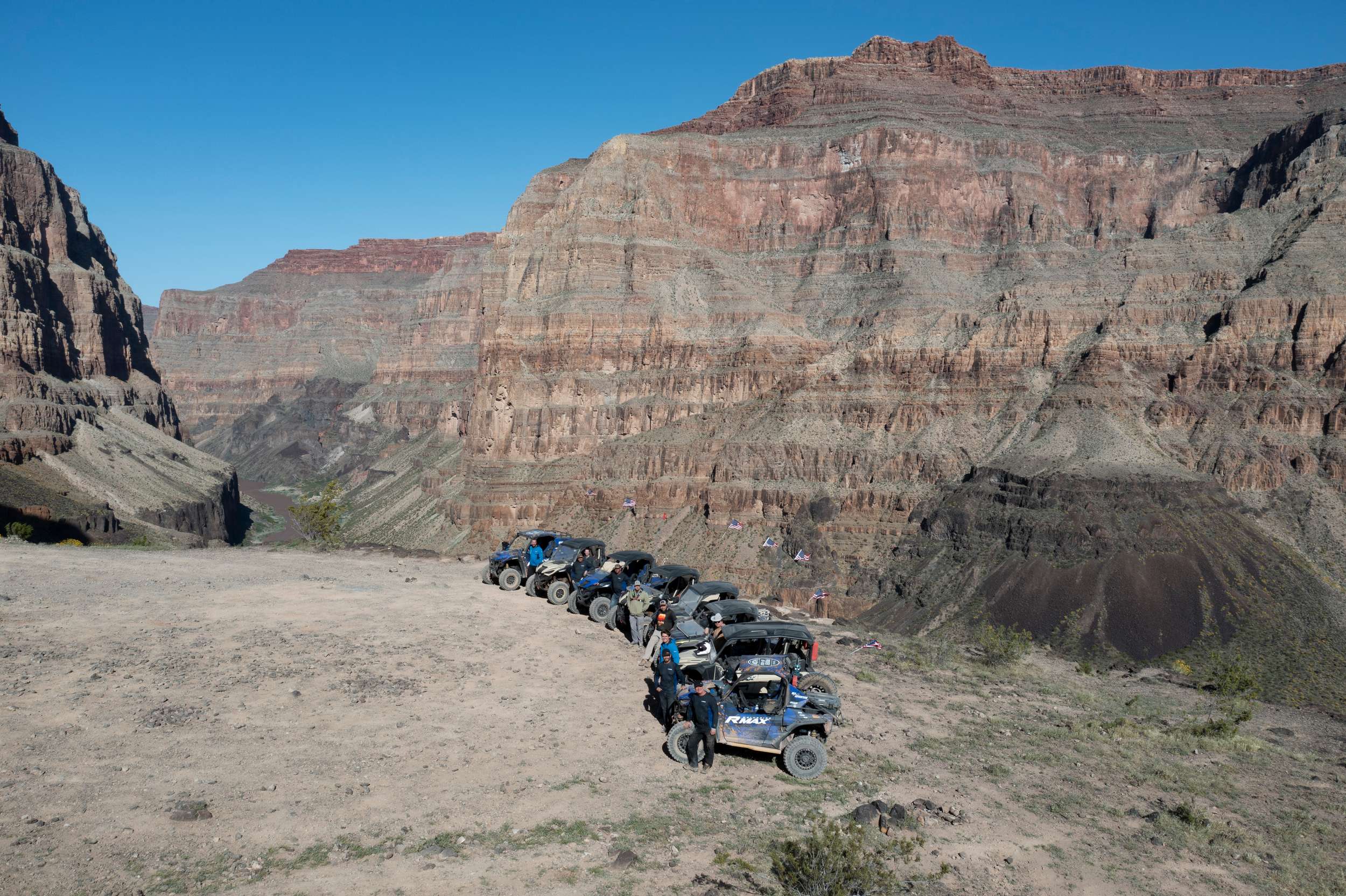
It was lava rock. At Whitmore Canyon, we were standing on a layer of lava that flowed into the Grand Canyon somewhere around 87,000 years ago. Lava flowing into the Canyon left dams hundreds of feet high. At the right moment in time, I would have been able to walk over the river.
More than 17 lava dams in this section of the river turned the Colorado into a series of lakes. Eventually, the water made its way over and under the rock, reopening the river and restoring the flow.
The only sign of all of this activity today, apart from the actual info sign I was reading from, is the matching layer of black rock on the canyon wall across from where I’m standing.
You’ll have to forgive my foray into geology, but it is part of the magic of this part of the world. There are very few places where so much of the history of the earth is on display for you to see, layer by layer, like this.
Of the many countries I’ve visited and sights I’ve seen, the American Southwest is the only place that has made me want to go back to school. To learn enough to even begin to understand the hundreds of millions of years and incredible forces that have gone into creating these landscapes.
A Real Dinner Triangle
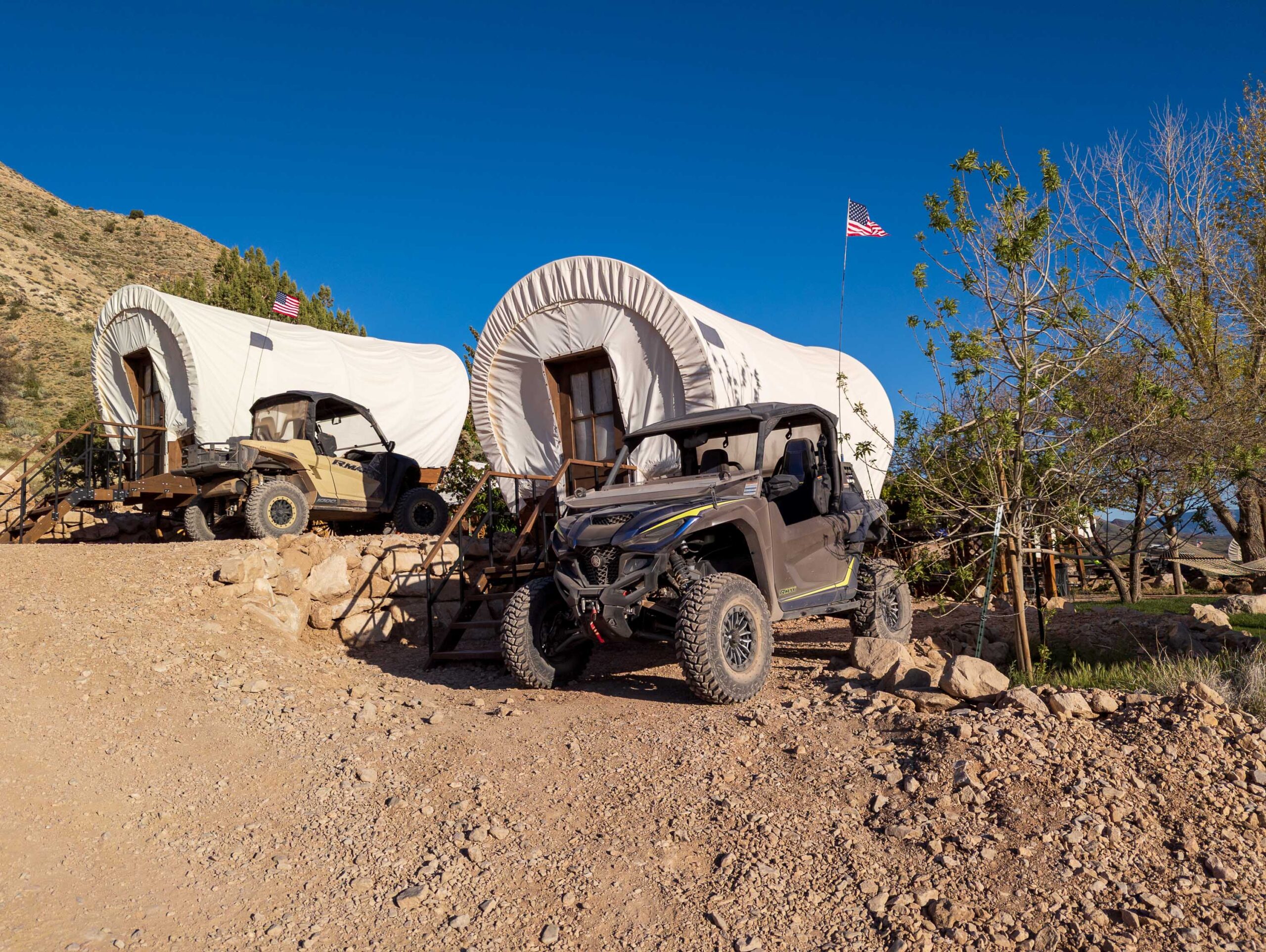
The rest of the group was ready to head back to the ranch, even if I was still staring in awe. I was tired, though, so I didn’t put up much of a fuss.
At the Bar 10 ranch, I slept in a Conestoga Wagon, inspired by the wagons that settlers used to carry their hopes, dreams, and worldly possessions across the country in hopes of making a better life.
After experiencing just a single day of this terrain through the modern-day magic of adjustable Fox shock absorbers, I’m not sure how early setters didn’t turn around and give up after the first lunch stop.
The ranch building only dates to 1983, but the theme here is much older — the romantic, classic West that never actually existed, at least not in the way we think of it.
Equal parts blame and credit go to Zane Grey and Louis L’Amour for the romanticization because it’s a lot better than the reality of the time: dysentery and rocks followed by parched land and even more rocks.
Ranch on the Ranch?
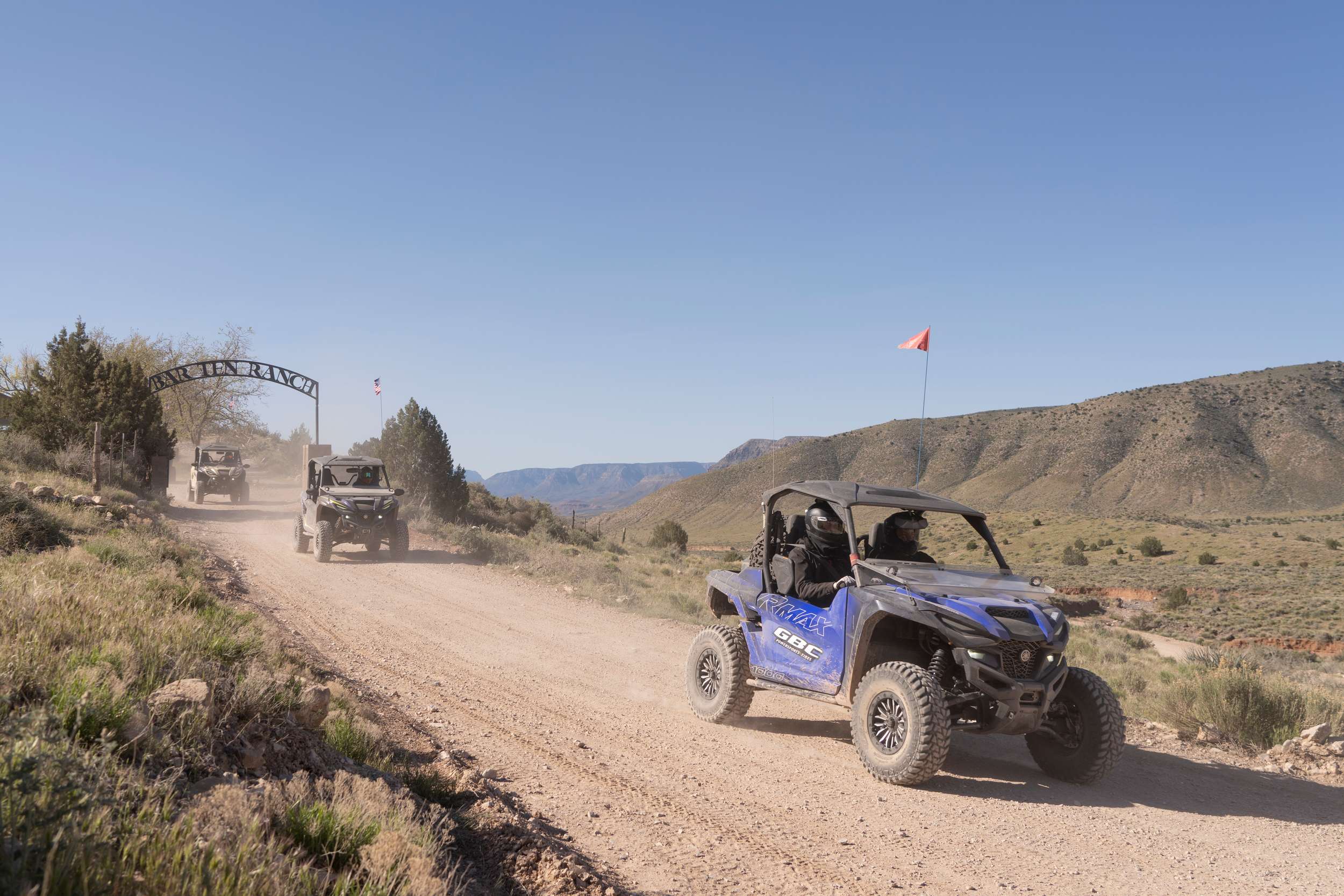
Dinner was a hearty meal of the Ranch’s free-range beef and potatoes cooked in a healthy dose of bacon grease. The kind of meal that sticks to your ribs. And arteries. Sorry, this food can only be described using clichés. It’s the law.
First, though, we had a salad. Covered in ranch-made ranch dressing. It was so damn literal, and I felt so authentic. At least, that was my excuse for chuckling to myself like a madman for half of the meal. Maybe I was just tired.
After some campfire stories and just the right amount of fiddle music (about five minutes, if you’re wondering), it was time for bed. And despite the absolute silence that had my tinnitus singing louder than it ever has before, I was asleep in minutes after dropping onto the covers.
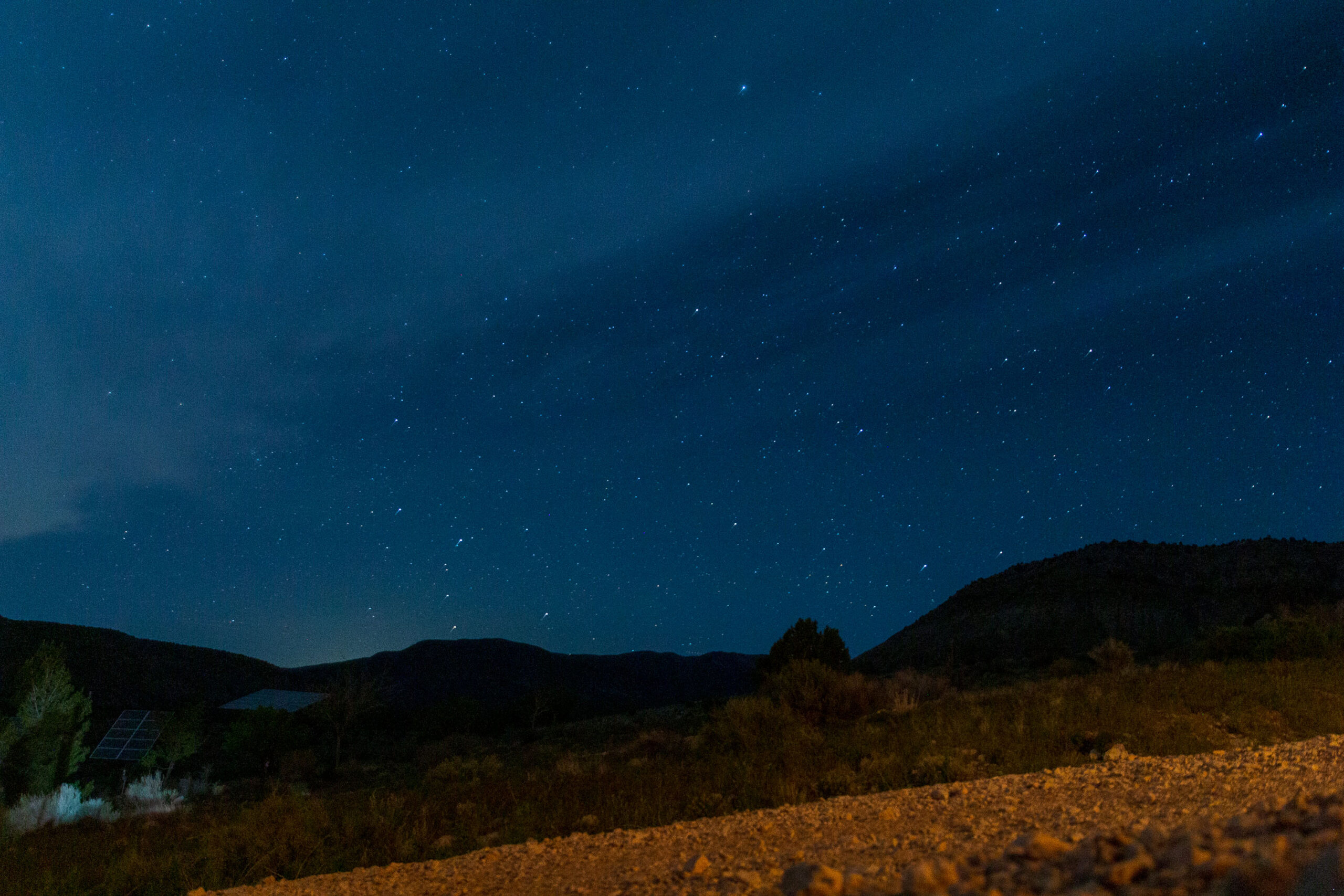
Until being woken suddenly by a rush of wind just as the clock ticked over into a new day. I briefly stepped outside of my covered wagon to see an incredible sky. We were in the middle of one of Arizona’s Dark Sky Places, and the sky was alight with stars and visible galaxies. I only wish I had enough energy to take more than a couple of photos, but I was far too tired to deal with the intricacies of long-exposure photography.
Day one came with a mix of trail surfaces that included loose rocks, fixed rocks, big rocks, and small rocks. Rutted dirt and mirror-smacking trees on both sides. All of that after the initial rock crawl and sand dunes.
Day Two: Flat-Out
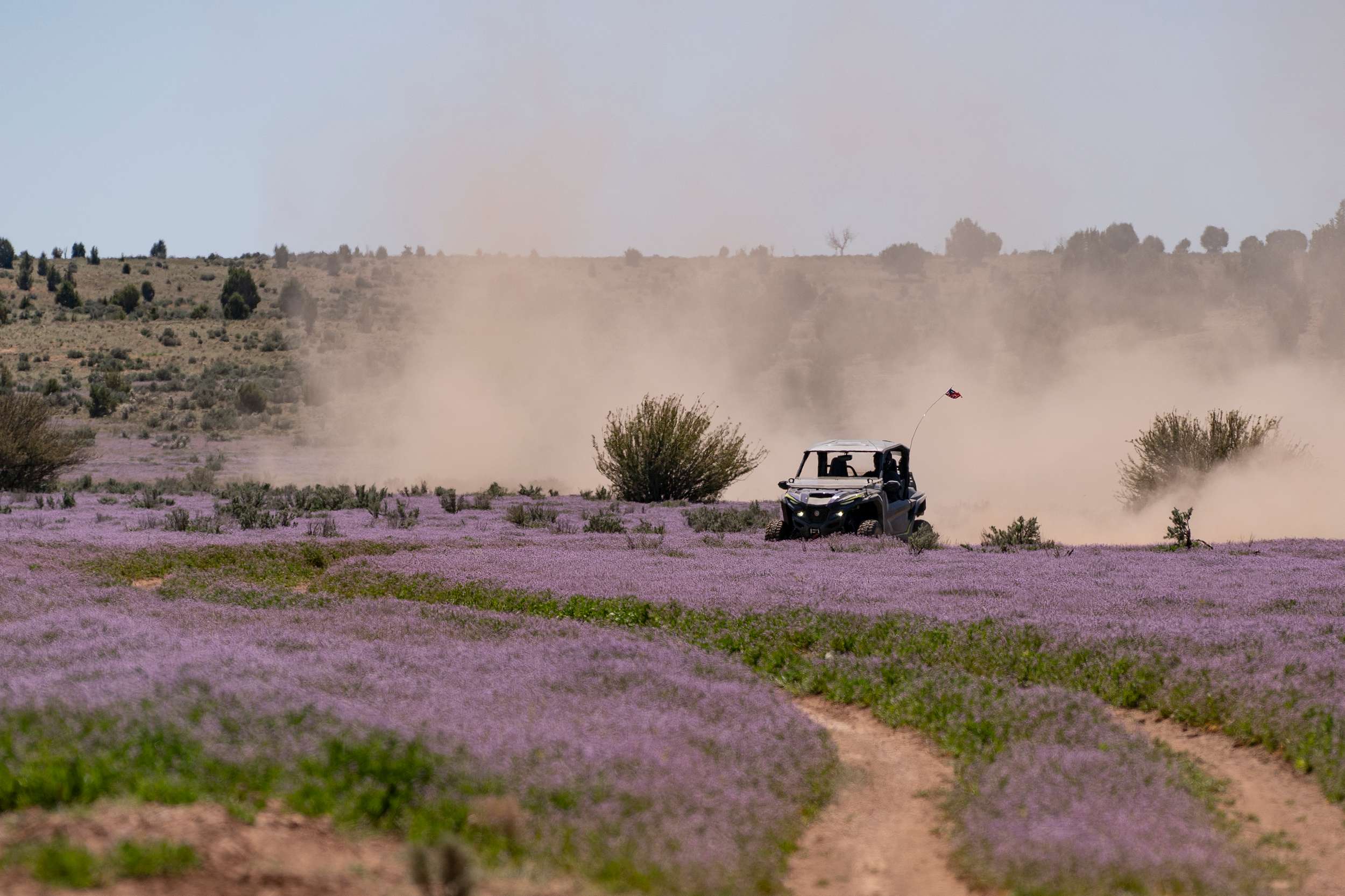
Day two was a very different landscape. A mix of wide-open dirt roads and flat-out smooth tracks joined by sudden and puckering drops into washes and off the sides of cliffs. There wasn’t much in between.
Instead of climbing up to the clifftops, I was running in the valleys for smoother terrain and higher speeds. The group is spaced out by now, mostly because of the dust. I like riding flat-out, but for the first time on the ride, I felt truly alone.
Because, at least for a while, the riding was less work, my mind wandered. Contemplating the universe? No, more like the thought that if I stop now, by choice or by force, it will be at least five minutes before the next rider appears. And that rider will need at least five more minutes before the rider behind them. Who has the sat phone again?
Shortly before midday, I started climbing mountains once again, and the ride got tough. I was being thrown around the cabin and desperate not to fall behind. Battered by rocks, terrified of drop-offs that fall hundreds of feet, and tired from too much seat time, I’m getting close to that point where the ride stops being fun and starts to become a real effort.
A break for lunch in the biggest field of those damn purple flowers yet had me feeling recharged, which was fortunate because once we got out of that field, the ride got even more grueling.
A Little Bit About My Horse
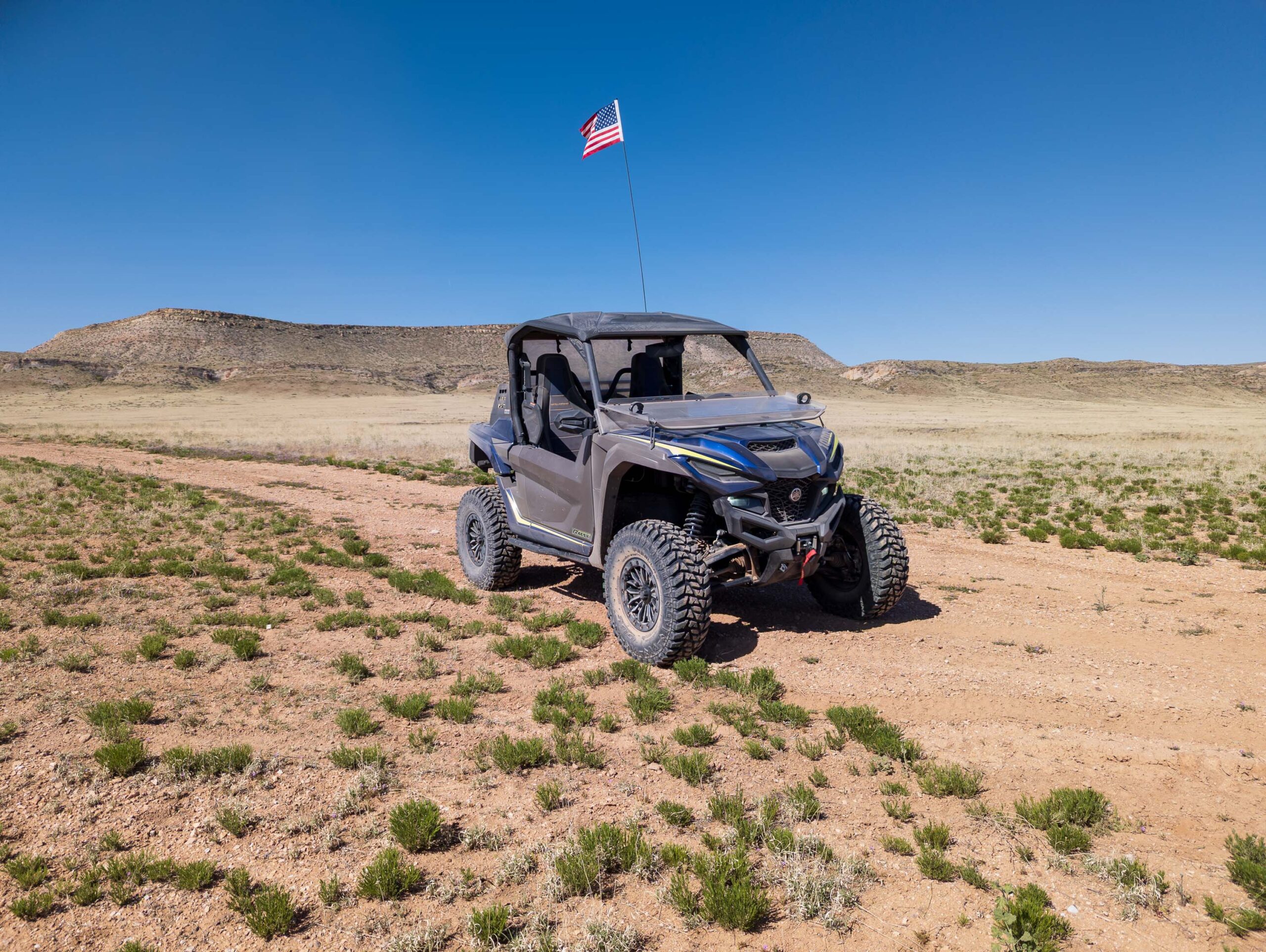
I was putting this Yamaha to the test. Bottoming out on rocks, using all of the suspension travel, and taxing driveline components as well as myself.
So far, I haven’t said much about the Yamaha RMAX 1000 I’m diving, so I should probably remedy that. The company pitches the RMAX 1000 as a recreational UTV that can still get to work. That’s why it has a dumping bed that can hold up to 600 pounds (double the RZR XP’s non-dump bed) and a factory trailer hitch that’s good for up to 2,000 pounds.
Those are two great features for helping you take care of your acreage or lugging a week’s worth of camping gear, the family, and a small boat to a remote lake. When you’re pounding down trails for two days, though, it’s a bit of a compromise. Spring rates that can handle the payload make for a rougher ride despite the massive 16.9 inches of rear shock travel.
Switching modes on the in-cab adjustable Fox shocks of this Limited Edition trim did little to change ride comfort. The only noticeable effect they had was to improve stability at high speeds, and they did that quite well in Firm versus Comfort settings.
YCC-T Saved My B-U-T-T
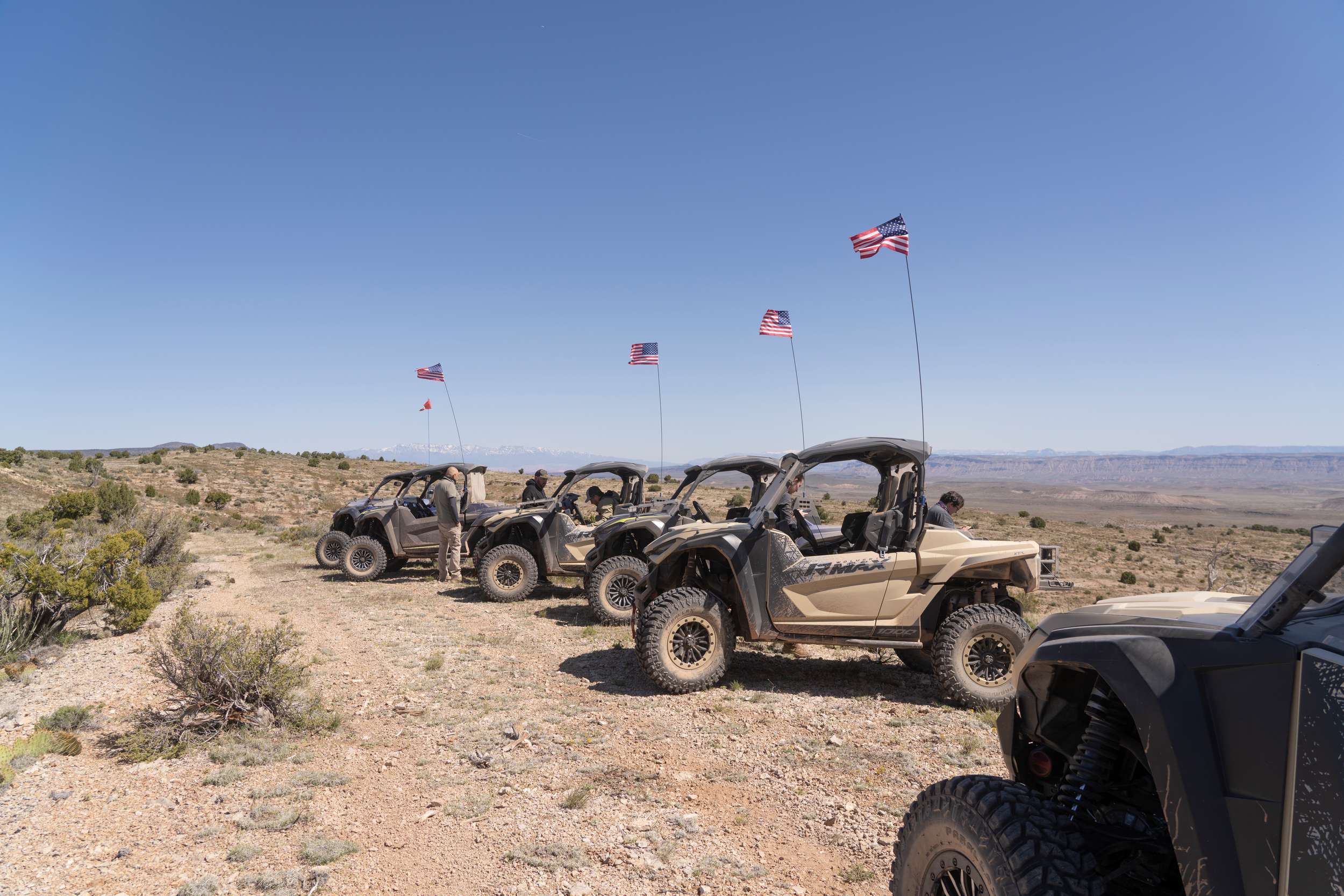
Yamaha Chip Controlled Throttle, the RMAX’s electronic throttle modes, however, was wonderful on the varying terrain. Crawl mode reined in the sudden stabs of the throttle that happen when you’re bouncing over particularly rough terrain and made it easier to get through tough spots. Sport made the throttle much more linear and let me kick out the tail at will on the smoother sections. Trail was a good in-between option, so, obviously, I barely used it.
The seat was one more place where the work-and-play compromise showed itself. The flat seat made it easy to hop in and out, and the three-point belt was great for quick hops in and out. But on longer rides, the seat’s upright back and small cushion started to make the Wolverine feel more like a regional jet than an expedition finder and left me wishing for a four-point harness.
Yamaha has a four-pointer on the accessories list for less than $400, so maybe that factory belt isn’t such a big deal. A bigger deal was the in-dash nav system, that’s actually a removable tablet. The removable unit is great for setting up your maps from the comfort of indoors, but its dim screen was nearly invisible on the trail, whether in the sun or in the shade.
I loved the excellent brakes, which did a spectacular job of repeatedly bringing me back to a near-emergency stop. The same went for engine braking, which didn’t suddenly disappear at crawl speeds, something I’ve noticed on other brands.
Back Into the Sand
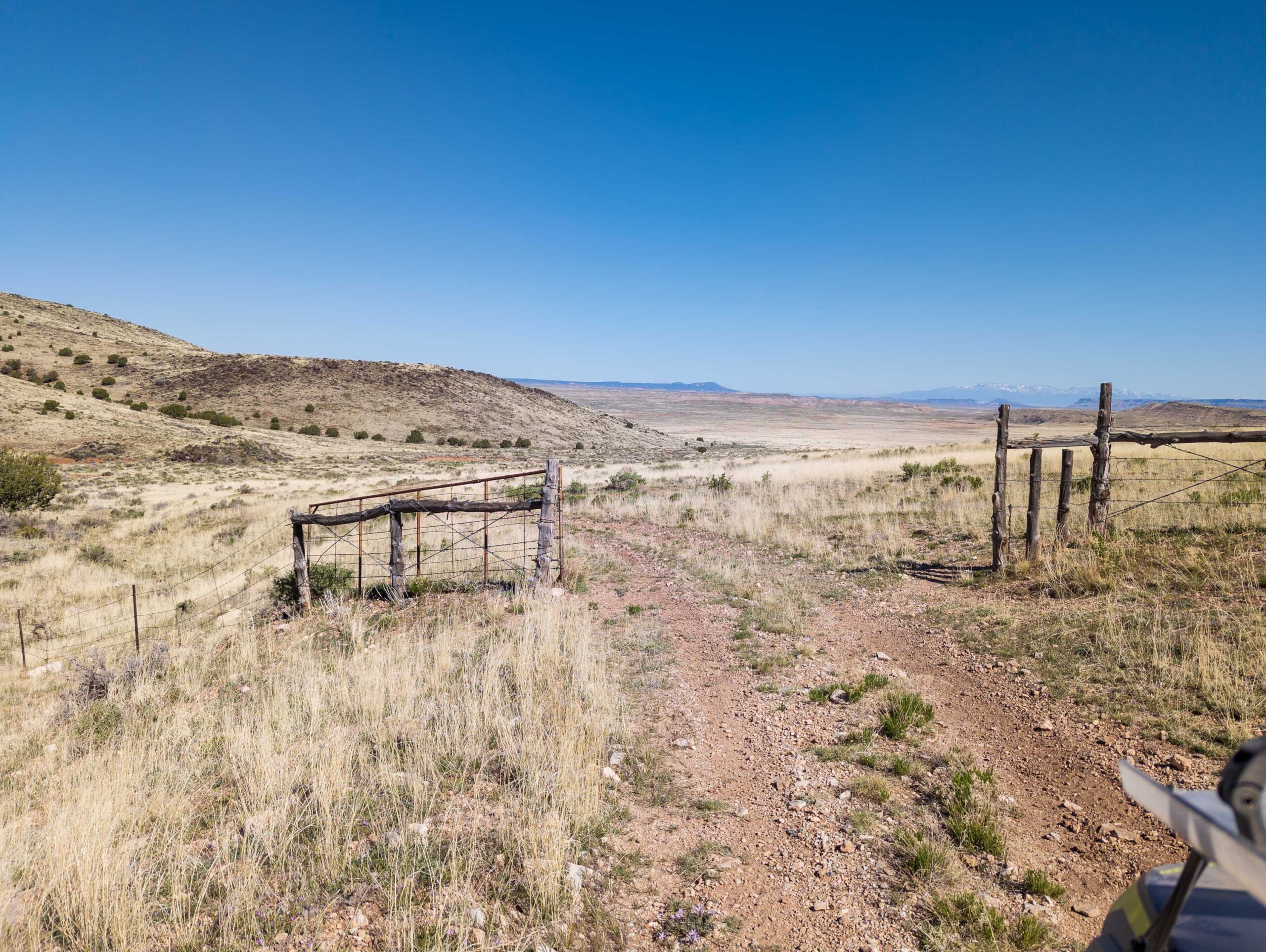
The last few hours of our ride wound back down into Sand Hollow. They were mostly long stretches of unimproved road, and I could tell I was getting closer to town by the sharp increase in how many other people there were.
Some were target shooting, others were flying drones, and some just looked like they came out into the wilderness for a picnic.
It’s for these stretches that our rides are wearing Parallax tires from GBC instead of the factory rubber. They’ve given me amazing traction on every type of surface I’ve driven on, along with stability when sweeping corners have suddenly turned tighter than they looked.
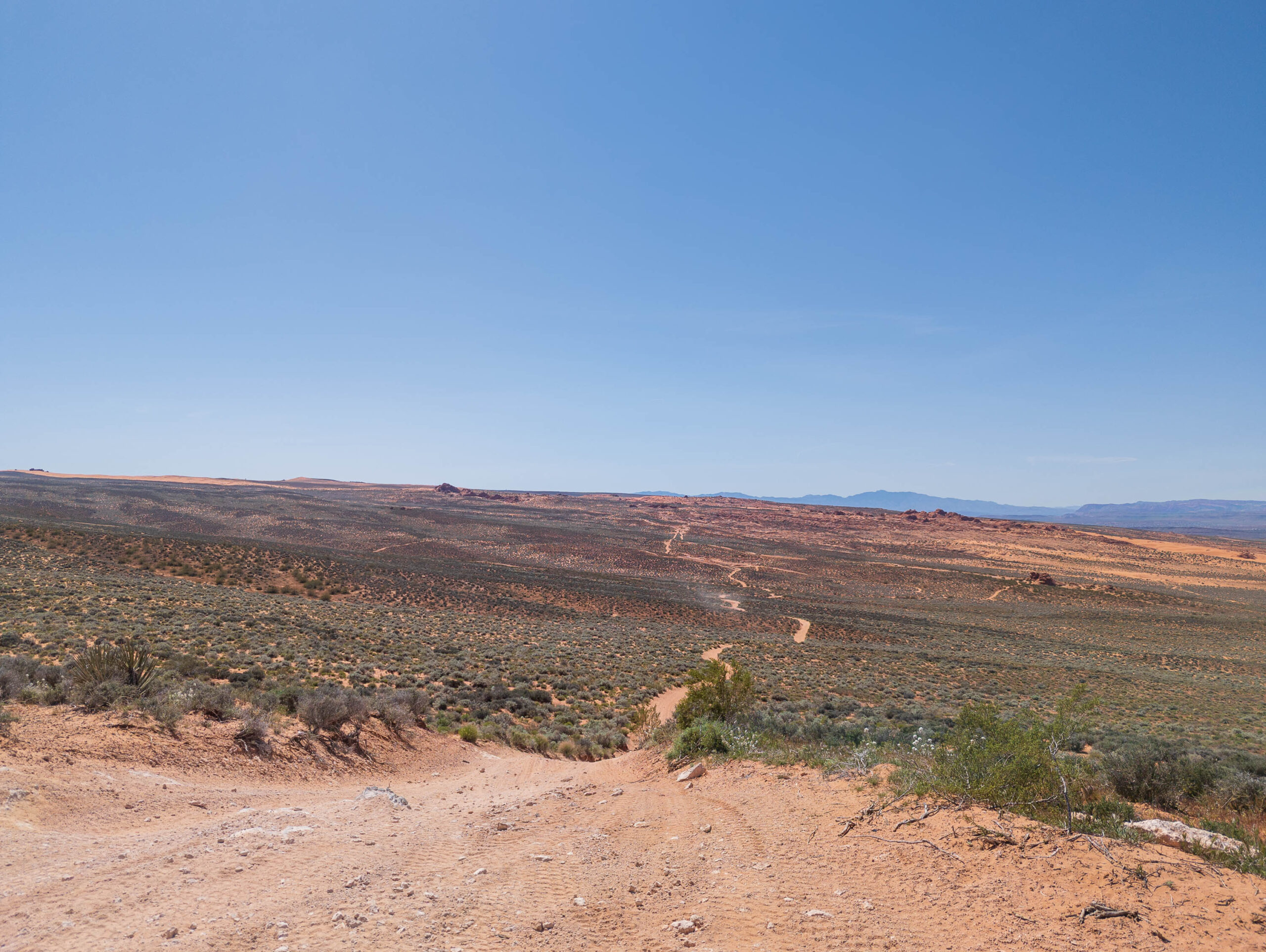
Even the deep sand dunes that I had to cross to get back to the staging area were no problem for the tires and my driving. Because I’ll admit that by that late into day two, my throttle management wasn’t as precise as it was early on day one. Lax throttle control is a great way to end up bogged down in the sand, so the help was appreciated.
My Grand Canyon Adventure Ends, Far too Soon
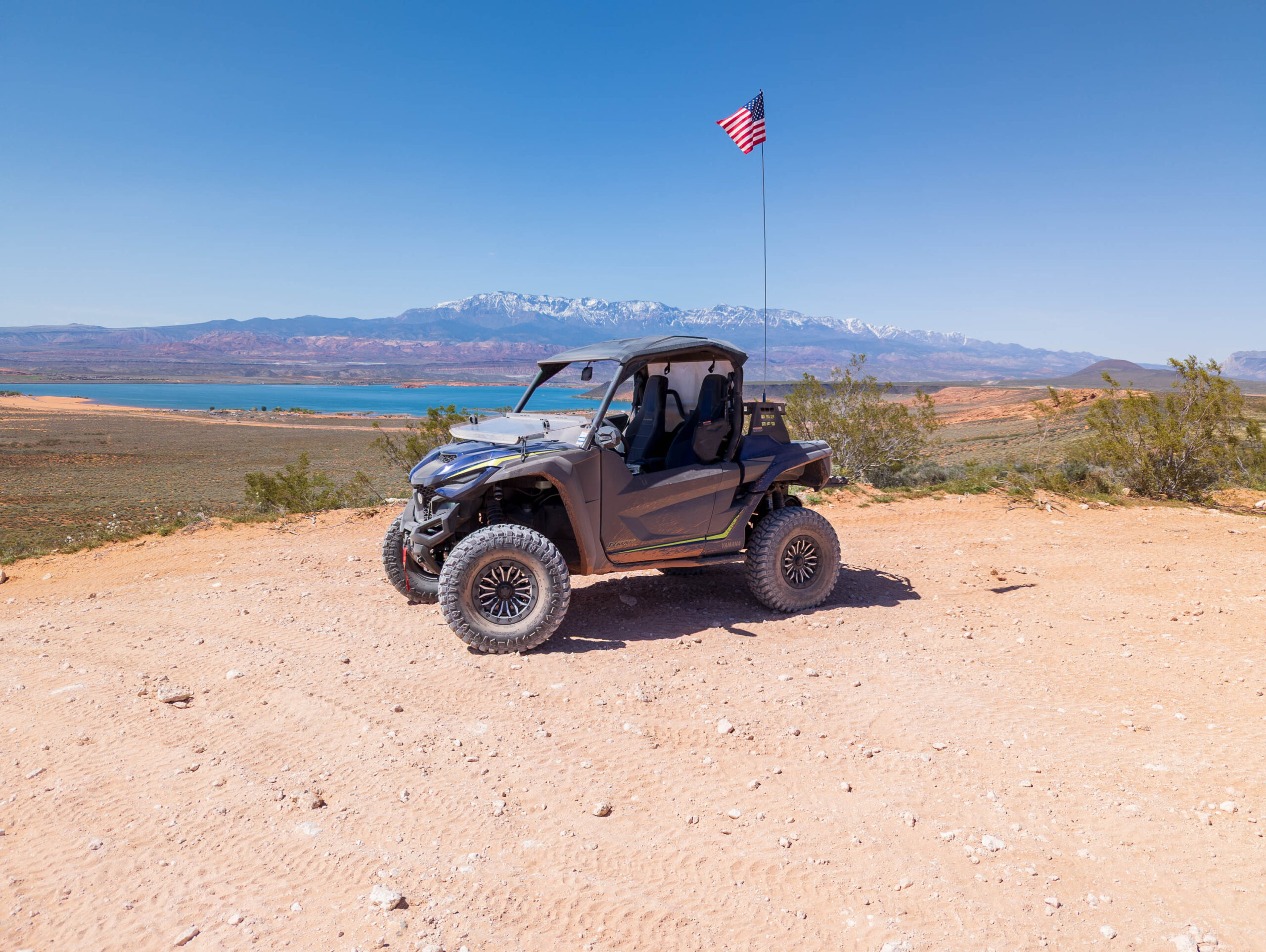
After two days and more than 250 miles of riding, it was the return to the parking lot that was anticlimactic, not the Canyon. I arrived tired and covered in enough dust to make a Dyson weep, but I was somehow ready for more.
Our group of RMAX 1000s took some serious punishment and needed nothing more than (frequent) fueling. There wasn’t even a flat tire among the group of about 10 machines.
The breathtaking Grand Canyon more than lived up to my expectations, and as I type this, it is directly responsible for at least 30 open browser tabs on three devices. But it was the journey itself that was truly amazing. The constantly varying terrain, the desolate locales, and that idolized vision of the West. All just sitting there, waiting for someone to come see it.
